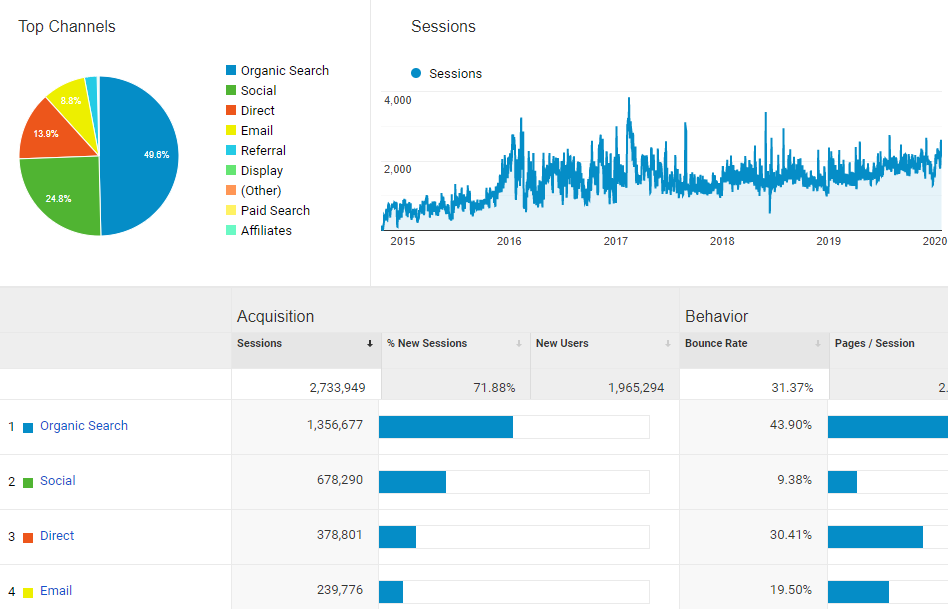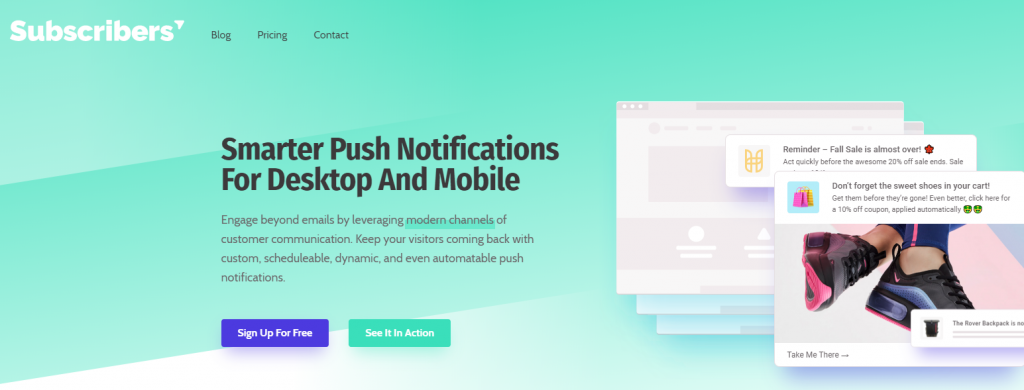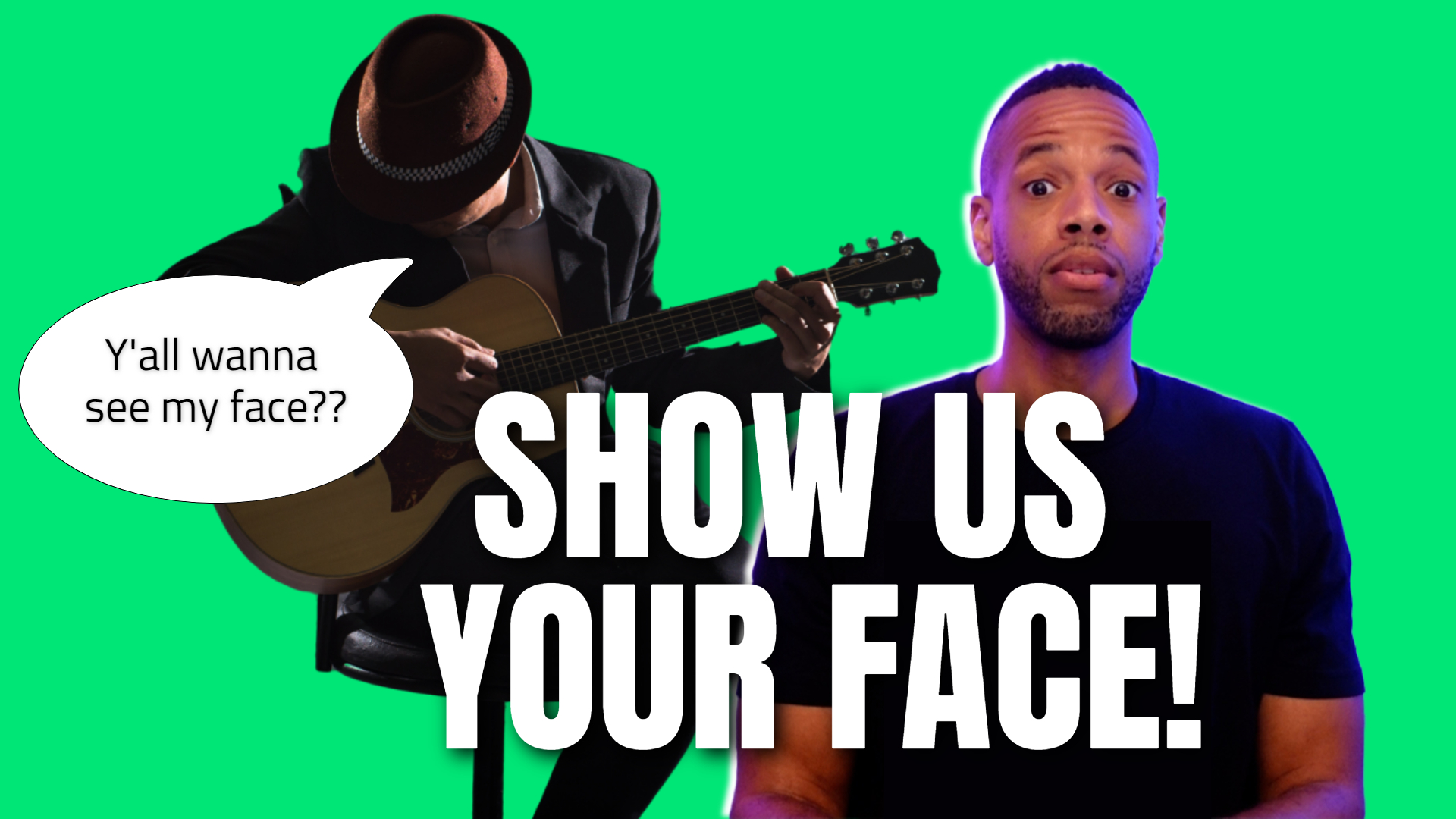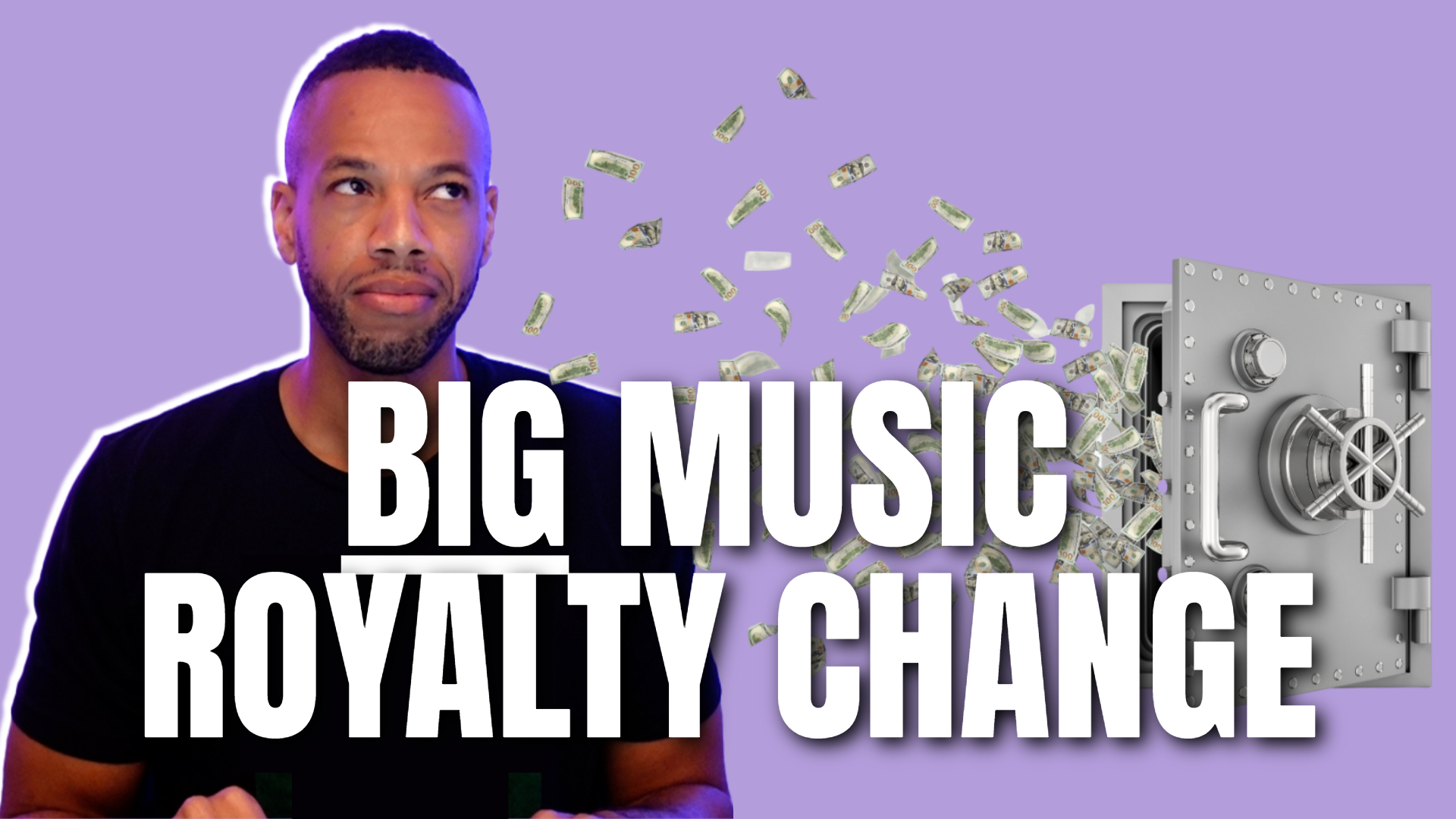SEO For Musicians: How We Got Over 1,193,917 Website Visits

*This article may contain links to affiliate products & services. We have reviewed these services to try and ensure the highest quality recommendations*
Written by Omari
If you are in the music business, you need a website. However, having a website is not enough. If you want to increase your exposure, you need to get savvy and employ techniques which will drive traffic to your site.
If you do a music artist Google search, you will find that there are hundreds of thousands of musicians, all vying for the public's attention. A small percentage of these musicians have websites which are successfully getting people to go to them.
When you have a traffic growth strategy, you create a clear pathway for your music business to follow into a world of enormous traffic. Some of these steps will take more time and effort than others. However, as with me, you will see that all your work will have paid off in the end. If you believe you have incredible music to share with the world, you will find these tips taking your website's traffic to new heights.
How to Get More Traffic For Your Music Business
If you are having trouble with increasing traffic to your music business website, you have come to the right place. You will find out exactly what you can do to rank higher in Google's search results so more people find your website. Here are some of the steps I took to get over 1,193,917 website visits for my music business.
Keyword Research
A keyword is simply the words people use when searching for something.
Let’s say you’re a Jazz musician. Instead of only doing Spotify promotion or YouTube music promotion, you can also find people looking for certain Jazz terms, get your website in front of them, and introduce your music/products to them this way.
How do you find the right music keywords? Glad you asked.
Keyword Research Tools
One person can only think of so many things to search. That’s why there are keyword research tools that give you lists of suggestions. My favorite one is Ubersuggest (it’s also free).
Say I type in ‘history of Jazz music’. It will then give me a handful of other related keywords I can either include in the same article, or possibly make new articles out of those keywords if they don’t fit in well with the first.

Long Tail Vs Short Tail Keywords
As you browse through keywords, you’ll typically notice that shorter terms get more searches. They are also harder to rank for and less specific. Longer terms get less searches, but are very specific and have less competition.
When you’re first starting out, you’ll want to go for long tail keywords to rank for. Long tail keywords are generally 4 or more words and may only have 50 searches per month or less.
I know that doesn’t seem the most exciting, but keep in mind that you can make as many articles or videos as you want! You can make dozens of articles centered around the lower hanging fruits and build traffic for years to come.
Headline
You’ll want to include your main target keyword in your headline in an attractive way. Think about the headlines you click on when your search Google, or the ones you click on scrolling through social media.
You’ll want to add a power adverb or adjective to the titles to stand out among the other headlines that appear.
Headline Tags
Whenever you make a headline on your pages you’ll notice that it gives you an option to tag it as headline 1, headline 2, etc. The most important headline is usually at the top of the page, this is headline 1. You may also want to include some target keywords in headline 2’s, then anything after that you can label as headline 3 through 6.
Content Length
Content length should be anywhere from 500 to 2,000 or more words. If the keyword isn’t that competitive, you’re safe with the 500 to 1,000 word count. Once you start getting into terms getting 500 or more searches per month, you’ll want to up the word count.
Don’t just stuff words into the article, but add more value so that people stay on your page longer, bookmark it, and share it on social media.
Implementing Target Keywords
You can also include some long tail keywords in your meta description and copywriting. If a term is only getting 10 searches a month, you’d probably include it somewhere in your article rather than making an entire article about it.
Backlinking
Hyperlinking or backlinking is putting a link to a website within the text of your article. For instance, we had an earlier article called SEO for Musicians. Whenever you click that blue text, you’ll be taken to that page. That’s a hyperlink.
You want to hyperlink to other articles on your site when appropriate as well as authority websites.
Authority websites are well-known and reliable. This includes places like Wikipedia, YouTube, Education sites, and feel free to hyperlink to any of our music business blog articles as well.
Email List & Push Notifications
Getting followers on social media has a purpose, but you’ll find you get more traffic to your website from email and push notification subscribers. Some resources we’re affiliated with and can vouch for are Mailchimp & Subscribers.com.
Make an enticing headline to get people to sign up for your email list. ‘Sign Up For Our Newsletter’ is not an enticing headline.
Here’s one example you can take for your thinking process. Let’s say you had a crazy show where you dove off the stage and ended up spraining your wrist. Like most concerts these days, you probably have that on film. Upload it to YouTube or Instagram and send that link to people as soon as they sign up for your email list.
Here’s how the headline might sound: “I Sprained My Wrist Stage Diving At My Show In Los Angeles.” Then in the description or a button, you can explain how you’ll send them the video once they sign up for your email list along with other updates and cool stuff from you.

Google Posts
If you Google my business for musicians, you will discover that Google has been making moves to help musicians out and get noticed. In 2018, Google launched Google Posts. Thanks to this feature, any musician can make posts using the Google Knowledge Panel. Google will show pretty much any kind of content you post directly in its search results. This will give you tremendous exposure considering Google is the most popular search engine in the world.
The Google Posts you make will appear just below the Google Knowledge Panel that shows up in the search results. Thanks to this, you get your website in front of more peoples' eyes.
Use Social Media
Yes, social media is inundated with lots of noise these days, but you can still get content to go viral. Whether it is an engaging and provoking article or a video of your latest song, if you have good content to share on social media, you should do it.
Submit it to aggregators like Reddit and promote your content on websites and apps like Soundcloud, Youtube, and Facebook. There are numerous opportunities to get your website more traffic when you link it within any content you share on social media. Besides sharing content on social media, make sure a link to your website is on every social media profile you have.
Not only will this get you more visitors, but you will be potentially get more backlinks to your website, which is something search engines view favorably and they will rank you higher in the search engine results pages (SERPs).
Run a Giveaway
People love getting free stuff. If you have a music business, you undoubtedly have music and merch to give away. With services like Gleam, it is easier than ever to set up a giveaway and then have thousands of people enter for a chance to win.
What is great about a service like Gleam is that you can include certain tasks for people to complete for the ability to enter the giveaway. These can include signing up for your email list, following you on your social media accounts, as well as others. You can run giveaways for free to see how effective they are. If you find that you are getting massive amounts of traffic like I did, you can always upgrade and get access to even more tasks which contestants have to perform to enter your giveaway.
Bonus: Google Knowledge Panel
The Google Knowledge Panel for artist businesses is a critical tool in any musician's internet growth strategy. The Knowledge Panel is the little box you see come up on the right side of Google search results. It shows details about whatever it is that you are searching for. Since you have a music business, the Google Knowledge Panel will be one of the easiest ways to drive traffic to your website.
When someone searches for your music business on Google, they will see a panel displayed with basic information about it, such as your name, photos, songs, albums, movies, a link to your website, and several streaming services to hear your music. If you have one, there will also be a snippet of your Wikipedia page. If you want your music business to be found when people search your name, then this panel will be the best tool in your arsenal.
Wrapping Up
These are some of the ways I was able to get over 1,193,917 website visits for my music business. If you follow these steps, you will also be on your way to getting an incredible boost in traffic to your website. There are lots of things you can do right now that cost no money at all to increase your website exposure, so get started today.
When your song is ready to go, it's time to start promoting it to potential fans! Omari has the best organic promotion services money can buy. With packages for Spotify, TikTok, Instagram, and YouTube, we will get your music the traffic and attention it deserves! Click below for more information.
SPEAK YOUR MIND
Leave a Reply
How This INDIE Artist Got Over 67,598,275 Streams On ONE Song
Join the No-Nonsense Music Marketing Newsletter to get the most valuable weekly case studies and strategies to grow your music business!





1 Response to "SEO For Musicians: How We Got Over 1,193,917 Website Visits"
Hi,
I expect you’re doing okay.
My name is April, and I am looking forward to have a guest post backlink from your reputed website. If you are interested in considering my guest post submission, I would be more than happy to provide you with a detailed outline or a partial draft for your review.
Please let me know if there are any additional details or information you require from my end.
Thanks for your cooperation in advance.
Regards
April